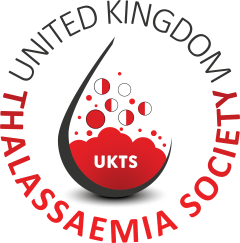Preimplantation Genetic Diagnosis

Information
PGD started nearly 25 years ago and thousands of babies have been born worldwide since then.
Over that time there have been many changes to what is offered and a significant increase in the number of referrals and PGD treatment cycles.
What is Preimplantation Genetic Diagnosis (PGD)?
PGD uses IVF (in vitro fertilisation) to create embryos in the laboratory from the eggs and sperm of a couple who are at risk of having a child with a genetic condition. Each embryo is then tested for the particular genetic disorder. One (occasionally two) unaffected embryos are then transferred into the womb, in the hope that a pregnancy will occur.
Who can have PGD?
PGD is only offered in a few centres in the UK. Our PGD centre is able to offer PGD for many of the most common genetic conditions and for most chromosome rearrangements. In many cases we are also able to set up PGD tests for rare genetic conditions, on a case-by-case basis.
There are two steps to treatment. The first step is to create, biopsy and test embryos. The second stage is to transfer unaffected embryos to the uterus (also known as womb).
How do i get referred?
Please ask your genetic counsellor or consultant geneticist for more details. They can then refer you to our centre for an initial appointment. Before offering you an appointment we often have to discuss individual cases as a team, particularly if testing is requested for a condition for which we have not offered PGD before. We are usually able to offer you an appointment within 8 weeks of referral and sometimes sooner.
Is treatment available on the NHS?
If you live in England there is an NHS national funding policy. This means if you are eligible you may be able to have UP to 3 cycles of PGD. PGD funding is only be available if:
- You have no healthy children from your current relationship
- Female is under 40 years old at time of treatment
- Female’s Body Mass Index is between 19.5 and 29
- Neither partner smokes
- A UK license is agreed for PGD for the condition affecting your Family (we can apply for a license if one does not exist already)
- There is no indication that PGD is unlikely to work for you.
Support group PGD update december 2014
Does it work?
There are many things that affect the chance of success. Our significant success rates reflect the largest number of cycles done in any centre in the UK. The further through the steps of a cycle a couple gets, the better the chances of success.
The above table gives the success rate of all our cycles. More recently success rates have improved and over time we expect this will change the above figures too. If you would like details of success rates in other UK centres you can find this information on the Human Fertilisation & Embryology Authority (HFEA) website: www.hfea.gov.uk
What does PGD involve?
For some genetic conditions, prior laboratory work up is required to develop a genetic test that will be used on the embryos. This preliminary work can take anything from two to nine months depending on the technical requirements of the case.
Egg collection & fertilisation
Even though most couples who have PGD are able to become pregnant naturally, they will need to undergo in vitro fertilisation (IVF) to produce embryos for testing. First, the ovaries of the female partner are stimulated to produce several eggs. This is achieved by using a combination of fertility drugs and once the eggs are mature they are collected under anaesthetic. The sperm are then used to fertilise the eggs in the laboratory.
Testing embryos
Eggs which are successfully fertilised become embryos. Five days later, once the embryo has grown to a ball of cells (known as a ‘blastocyst’) a small sample of cells is very carefully removed (this is called the embryo ‘biopsy’).
After the biopsy the embryos are rapidly frozen (this is called vitrification) while the genetic test is performed on the cells taken from the embryos. Genetic testing takes two to four weeks to complete depending upon the reason for PGD.
Embryo transfer
Once the genetic test is completed, and providing the results show that there is at least one unaffected embryo available, an unaffected embryo can be selected and warmed, and transferred into the womb. A pregnancy test is carried out 12 days later to see whether the PGD treatment has been successful.
How long does it take to start treatment?
The time frame involved in preparing a couple for PGD varies depending on the reason PGD is being done. If it is a new condition for which we have not done before it will take much longer.
For a PGD test that we already have set up: 4-10 months
For a new PGD test: up to 18 months
Read the Update support groups PGD final 2014
